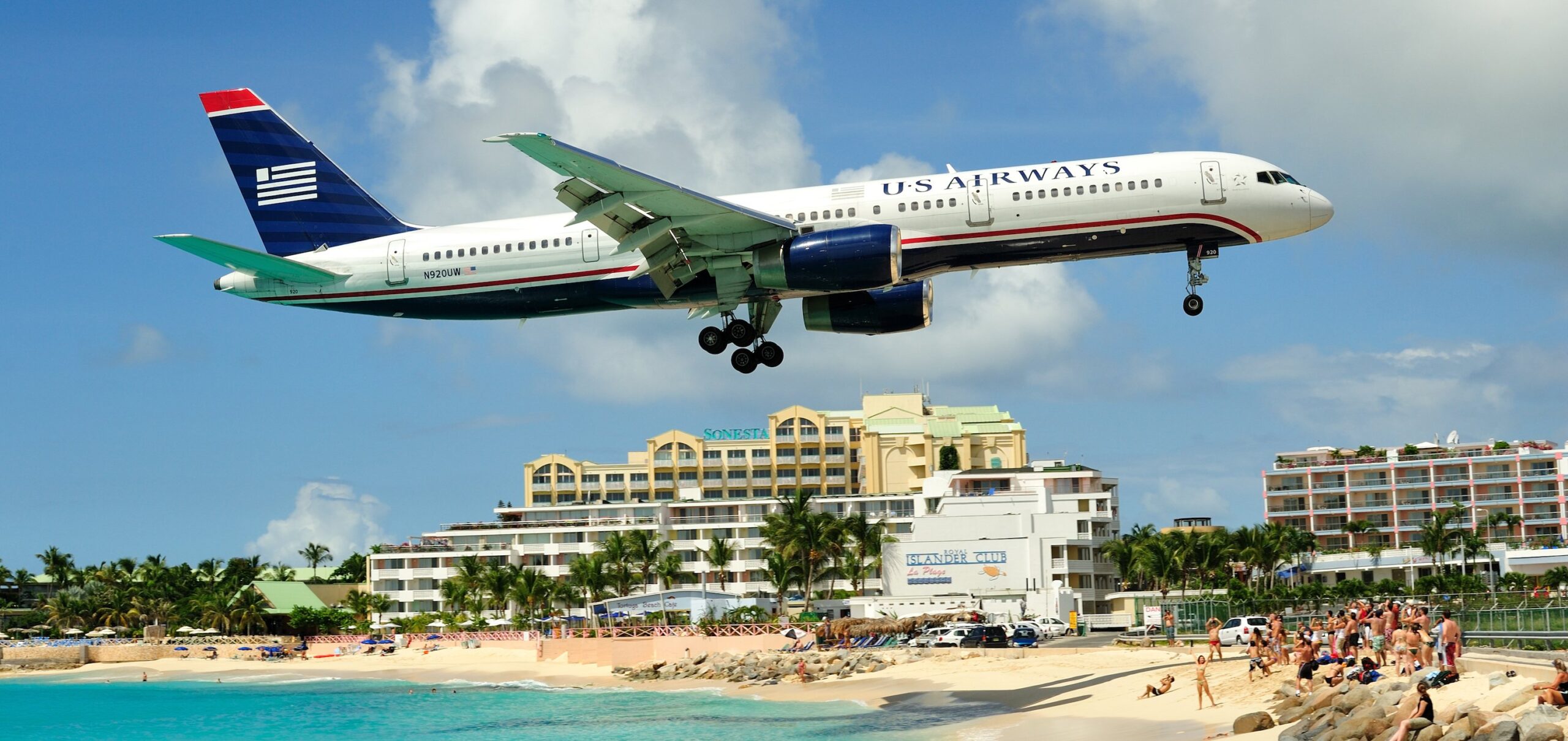Embarking on a journey through domestic air travel opens a gateway to new experiences and destinations. However, the key to transforming this adventure into a seamless and stress-free escapade lies in meticulous preparation.
Navigating the intricacies of airport procedures, from check-in to boarding, demands a thoughtful consideration of the items to bring for a domestic flight.
This is a crucial step for travelers of all backgrounds, whether seasoned globetrotters or first-time flyers, as having the right essentials can significantly impact the overall travel experience.
From indispensable identification documents to carefully chosen travel essentials and electronic devices, strategic packing not only enhances efficiency but also minimizes potential challenges along the way.
Within this guide, we will delve into the essential items that warrant inclusion in your travel checklist, providing you with the confidence to traverse the airport with ease and embark on your domestic adventure with peace of mind.
1. Essential Documents

Government-Issued Photo ID:
One of the foremost items on your checklist for a domestic flight is a valid government-issued photo ID. Whether it be a driver’s license, passport, or state ID, this document is your ticket through various security checkpoints and is indispensable for the check-in process.
Ensuring that your identification is current and matches the details provided during booking is crucial to avoid any complications during your journey.
Boarding Pass:
No journey begins without the all-important boarding pass. After successfully checking in, either online or at the airport kiosk, your boarding pass serves as the official document granting you access to the aircraft.
Storing it in a convenient and easily accessible location, such as a dedicated pocket in your carry-on, streamlines your passage through security and boarding gates.
Any Required Travel Permits or Documentation:
Depending on your destination, certain domestic flights may necessitate additional permits or documentation.
It’s essential to research and confirm if your journey requires any specific paperwork, such as travel permits or proof of vaccination.
Keeping these documents organized and readily available contributes to a hassle-free travel experience and helps you comply with any regional requirements.
Being well-prepared in this aspect ensures a smoother transition through airport protocols and safeguards against unexpected setbacks.
2. Luggage and Packing
Checked Baggage:
Size and Weight Restrictions:
When preparing for a domestic flight, it’s crucial to be aware of the size and weight limitations imposed on checked baggage by the airline.
Airlines often have specific guidelines, and exceeding these restrictions may result in additional fees. Carefully adhere to the provided dimensions and weight limits to avoid last-minute repacking or unexpected charges at the airport.
Labeling and Securing Belongings:
Ensure your checked baggage stands out in the sea of similar-looking luggage by securely labeling it with your name, contact information, and destination address.
Utilizing distinctive luggage tags or choosing a suitcase with a unique design can facilitate easy identification. Additionally, consider using locks or other security measures to safeguard your belongings during transit.
Carry-On Baggage:
Size Limitations:
Familiarize yourself with the airline’s regulations regarding the size of carry-on baggage. Different airlines may have varying size restrictions, so double-checking these details before arriving at the airport ensures that your carry-on meets the specified criteria.
Opt for a bag that fits comfortably in the overhead compartment or under the seat in front of you to streamline the boarding process.
TSA Regulations on Liquids, Electronics, and Other Items:
Abiding by Transportation Security Administration (TSA) regulations is vital when packing your carry-on. Liquids should be in containers of 3.4 ounces (100 milliliters) or less and placed in a clear, quart-sized plastic bag.
Electronics, such as laptops, must be easily accessible for screening. Familiarize yourself with any updated TSA guidelines to avoid delays during the security check.
Being well-informed about these regulations contributes to a smoother airport experience, ensuring compliance with security protocols and minimizing potential disruptions.
3. Comfort and Necessities

Comfortable Clothing and Footwear:
Dressing comfortably is paramount for a relaxed travel experience. Opt for loose-fitting, breathable clothing and comfortable footwear, especially if your journey involves long layovers or connecting flights.
Layers are advisable to accommodate varying temperatures in airports and aircraft cabins. Prioritizing comfort ensures you arrive at your destination feeling refreshed and ready to explore.
Snacks and Refreshments:
Packing a selection of snacks and refreshments is a thoughtful addition to your carry-on. While airports offer dining options, having your favorite snacks on hand can be a lifesaver during flights, delays, or when limited food choices are available.
Choose non-perishable items that travel well, such as granola bars, nuts, or dried fruits, to keep you energized throughout your journey.
Personal Hygiene Items:
Maintaining personal hygiene is essential, especially during extended travel. Pack travel-sized essentials such as toothbrush, toothpaste, facial wipes, and hand sanitizer.
These items are not only refreshing during the flight but can also be convenient during layovers or when faced with unexpected delays.
Additionally, including a spare change of underwear and basic toiletries in your carry-on ensures you’re prepared for any unforeseen circumstances.
Entertainment:
Long flights and airport waits become more enjoyable with a selection of entertainment options. Bring a book, e-reader, or tablet loaded with your favorite movies, TV shows, or music.
Noise-canceling headphones can further enhance your in-flight entertainment experience, providing a peaceful escape from the ambient sounds of the airport and aircraft.
Investing in a variety of entertainment options ensures that you can tailor your inflight experience to your preferences, making the journey more enjoyable and passing the time swiftly.
4. Travel Itinerary and Information
Flight Details:
Keeping a well-organized travel itinerary is imperative for a smooth domestic flight experience. Include essential flight details such as departure and arrival times, as well as the designated gate number.
Confirming this information in advance allows you to plan your arrival at the airport accordingly and navigate through security and boarding procedures with ease.
Contact Information for Airline and Emergency Contacts:
Carry a list of important contact information, including the airline’s customer service number and any emergency contacts.
This ensures you have immediate access to assistance in case of unforeseen circumstances or changes to your travel plans.
Storing this information in your phone and having a physical copy in your carry-on provides redundancy, ensuring you’re prepared for any unexpected situations.
Any Updates or Changes to the Flight Schedule:
Stay informed about updates or changes to your flight schedule. Airlines may communicate changes in departure times, gate assignments, or other pertinent information.
Utilize mobile apps or check the airline’s website for real-time updates. Being proactive and aware of any alterations allows you to adjust your plans accordingly and minimizes the potential for confusion or missed connections.
5. Health and Safety
Prescription Medications:
Prioritizing your health during domestic travel involves ensuring you have an ample supply of any prescription medications you may require.
Pack these medications in their original, labeled containers to facilitate security checks. It’s advisable to bring more than enough for the duration of your trip in case of unexpected delays or changes to your itinerary.
Additionally, consider carrying a copy of your prescription for added precaution.
First Aid Kit:
A compact first aid kit is a valuable addition to your travel essentials. Include basics such as adhesive bandages, pain relievers, antiseptic wipes, and any specific medications or medical supplies you might need.
This kit can come in handy for minor injuries or ailments and provides a sense of security, especially when traveling to destinations where access to medical facilities may be limited.
Face Masks and Hand Sanitizers:
In the context of health and safety, the inclusion of face masks and hand sanitizers has become increasingly critical.
Given the global emphasis on hygiene, wearing face masks is often a requirement in airports and on flights.
Pack an ample supply of masks to cover your journey, and keep hand sanitizers with at least 60% alcohol readily available.
Regularly sanitize your hands, especially after touching surfaces in the airport or aircraft, to reduce the risk of illness and ensure a health-conscious travel experience.
6. Currency and Payment

Sufficient Cash for Expenses:
While electronic payments are widely accepted, having a reasonable amount of cash on hand is prudent. This is particularly important for covering small expenses, such as transportation or purchases in locations that may not readily accept cards.
Ensure you have sufficient local currency if you’re traveling to a destination with limited card acceptance, and consider obtaining cash before arriving at the airport to avoid last-minute inconveniences.
Credit/Debit Cards:
Credit and debit cards are indispensable for modern travel, offering convenience and security. Before your domestic flight, check the acceptance of your cards at your destination and notify your bank of your travel plans to prevent any potential issues with transactions.
Carry cards from different networks to increase your chances of finding compatible payment options, and be aware of any foreign transaction fees that may apply.
Contacting Banks About Travel Plans to Avoid Any Issues with Transactions:
Proactively informing your bank about your travel plans is a crucial step in preventing disruptions to your card transactions.
Banks and credit card companies monitor spending patterns to detect potential fraud, and unexpected transactions in a new location might trigger a temporary hold on your card.
A quick call or notification through your bank’s app about your travel dates and destinations can mitigate the risk of such interruptions, ensuring seamless access to your funds during your domestic journey.
7. Miscellaneous
Chargers for Electronic Devices:
In our interconnected world, keeping electronic devices charged is paramount. Ensure you pack chargers for your smartphone, tablet, e-reader, or any other essential gadgets.
Consider a portable power bank to stay powered up during layovers or in-flight, providing you with the flexibility to use your devices without the worry of running out of battery.
Travel Pillow and Blanket for Added Comfort:
Enhance your in-flight comfort with a travel pillow and a cozy blanket. While airlines provide basic amenities, having your own pillow and blanket ensures personal comfort tailored to your preferences.
These items can make a significant difference, especially during longer flights, allowing you to relax and perhaps catch some much-needed rest.
Any Specific Items Needed for the Destination:
Tailor your packing list to the specific requirements of your destination. Consider the climate, local customs, and planned activities. If you’re heading to a beach destination, pack sunscreen and swimwear.
For colder climates, include layers and appropriate outerwear. Researching your destination’s unique needs ensures you are well-prepared and can fully enjoy your time once you arrive.
Related Topics:
Conclusion
Ensuring you have the right essentials when heading to the airport for a domestic flight is key to a seamless and stress-free travel experience.
From essential documents like your ID and boarding pass to carefully packed luggage, comfort items, and health necessities, being well-prepared enhances your journey.
Keep in mind the specific requirements of the airline and current travel guidelines to avoid any hiccups. By taking the time to organize your belongings and stay informed, you set the stage for a smooth departure and an enjoyable flight. Safe travels!
FAQs
What identification do I need for a domestic flight?
A valid government-issued photo ID, such as a driver’s license or passport, is generally required for domestic flights.
Do I need a physical boarding pass or can I use an electronic one?
Most airlines now offer the option to use electronic boarding passes on your smartphone or through their mobile apps. However, it’s advisable to check with your airline for specific procedures.
Are there size and weight restrictions for carry-on luggage?
Yes, each airline has specific size and weight limitations for carry-on luggage. Familiarize yourself with your airline’s guidelines to avoid any issues during security checks and boarding.

2 thoughts on “What To Bring To Airport For Domestic Flight”